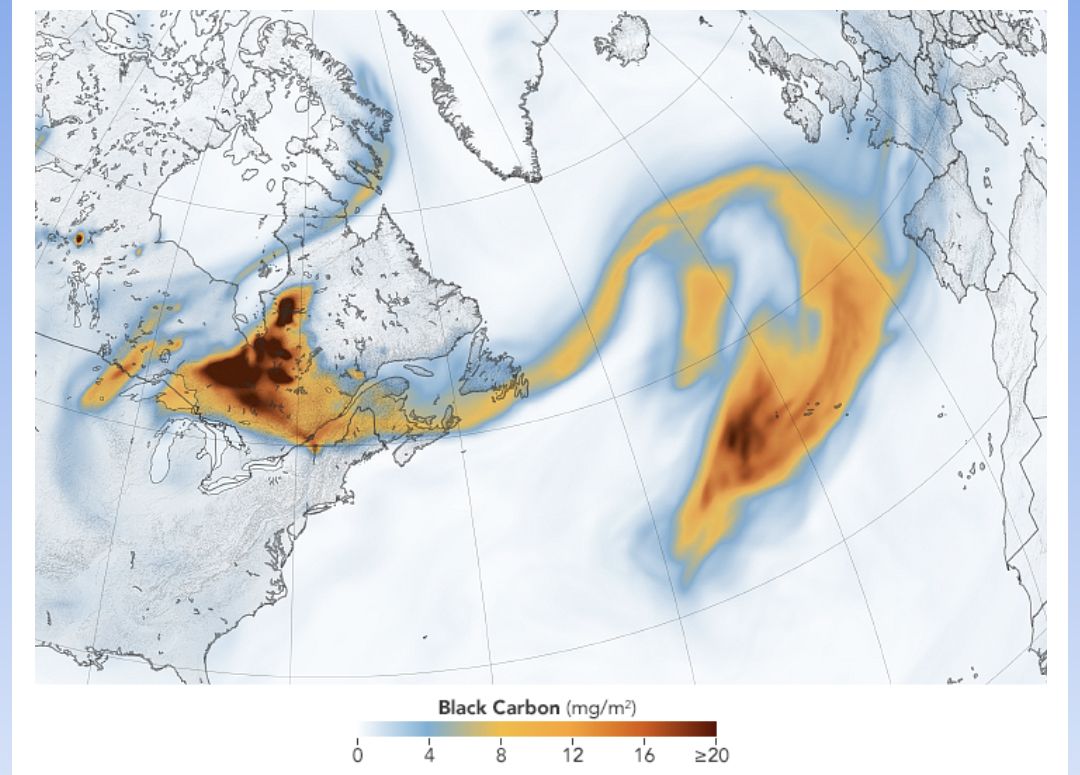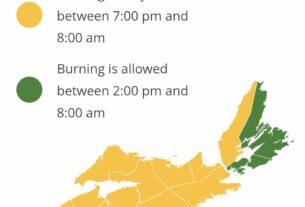**** Info via Environment Canada
Canadian smoke reaches Europe again
Fires in Quebec have been burning for weeks, smoking out many parts of Ontario, Quebec, Atlantic Canada and even the northeastern United States. On June 26, smoke from these fires crossed the Atlantic Ocean and reached parts of southwestern Europe.
Plume of black carbon particles—commonly called soot—spanning eastward from North America and across the Atlantic Ocean. The smoke drifted over northern Portugal and Spain, also reaching northward over other European countries. Credit: NASA’s GEOS forward processing (GEOS-FP).
Skies in the smoke-covered parts of Europe may have appeared hazy on June 26; however, the air quality remained mostly fair. This is because the smoke that reached Europe was in the high atmosphere, which doesn’t impact human health.
Forest fires in Canada
There have been a total of 3,081 fires as of June 29, burning an estimated 8.1 million hectares. This year’s wildfire season has surpassed its historical record in terms of hectares burned, previously set in 1989.
Current active fires across the country on June 30. Source: Natural Resources Canada.
Smoke emerging from forest fires across Canada has decreased air quality, triggering Special Air Quality Statements and Smog warnings in many regions across Canada.
Forest fire smoke can be harmful. It can hurt your eyes, irritate your respiratory system, and worsen chronic heart and lung diseases. There is no evidence of safe levels of exposure to some of these pollutants. Even very low levels of smoke can have an impact on health. As smoke levels increase, so does the risk to your health.
Wildfire smoke prediction for the next 72 hours
Wildfire smoke prediction of the amount of fine particles from wildfire smoke that will be added to the air over the next 72h.
Continue to monitor the Air Quality Health Index (AQHI) in your area. The AQHI is located on the NOW tab of our app.
For more: Protecting your health from wildfire smoke.




